SUCKER PUNCH: An Enigma Wrapped In A Mystery Inside A Fanboy Fetish Item
2011 is still young but its hard to imagine that any other film released this year will be able to polarize the fanboy community the way Sucker Punch has. On one side of this conflict, detractors claim it is a camp classic disaster and proof that Zack Snyder is no-talent, derivative hack. On the other side, the film's defenders proclaim the film to be a misunderstood classic in the making that audiences will eventually catch up to. It doesn't help that the film was hastily re-edited at the eleventh hour (losing multiple musical sequences!) and has been weirdly and wrongly accused of sexually exploiting its young female stars.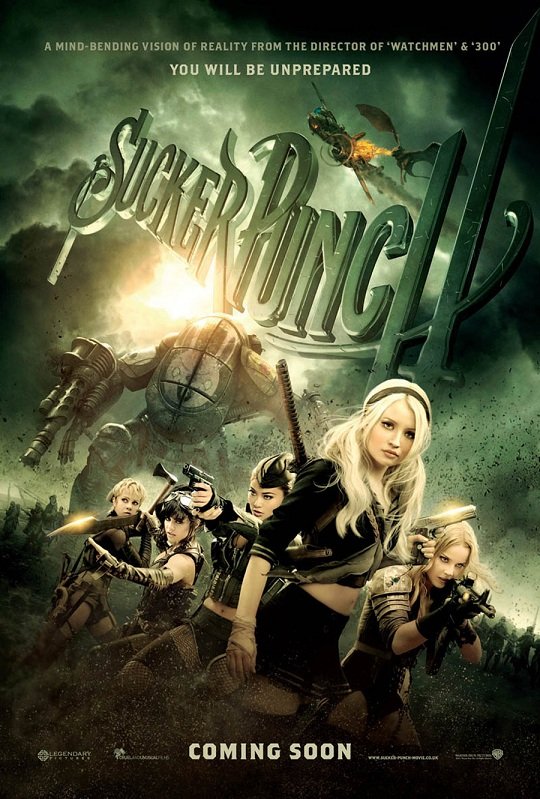 Is either side of this fight correct? No, but the problem lies in the question, which suggests that Sucker Punch must either be a masterwork or a debacle. Few films fall into either camp and it is arguable that Sucker Punch has both too many assets and too many flaws to be so easily categorized.Part of the film's controversy lies in its storyline, which is overcomplicated and vague all at once as it tries to synthesize every kind of fanboy-friendly genre fetish into one jam-packed storyline. The heroine is Baby Doll (Emily Browning), a young lady who is framed for the accidental killing of her sister and railroaded into a mental institution by an evil stepfather type. He makes an arrangement with a sinister orderly (Oscar Isaac) to have her lobotomized within a few days.
Is either side of this fight correct? No, but the problem lies in the question, which suggests that Sucker Punch must either be a masterwork or a debacle. Few films fall into either camp and it is arguable that Sucker Punch has both too many assets and too many flaws to be so easily categorized.Part of the film's controversy lies in its storyline, which is overcomplicated and vague all at once as it tries to synthesize every kind of fanboy-friendly genre fetish into one jam-packed storyline. The heroine is Baby Doll (Emily Browning), a young lady who is framed for the accidental killing of her sister and railroaded into a mental institution by an evil stepfather type. He makes an arrangement with a sinister orderly (Oscar Isaac) to have her lobotomized within a few days. However, Baby Doll makes a bizarre discovery during a therapy class held by resident shrink Dr. Gorski (Carla Gugino): when she dances, she has the ability to enter a fantasy world/alternate reality where she and her fellow patients are dancers that work at a sleazy club owned by the orderly. In this second plane of reality, Baby Doll can tap into a third fantasy realm (!) while dancing where she has magical fighting skills and can uncover clues that might help her escape from her dreary fate. She attempts to rally the other patients/dancers to help her break out but discovers that the forces of evil aren't easy to outwit in any of her realities - and her final goal might not be what it first seems.If the above synopsis sounds convoluted, that is because it is. The script, penned by Snyder with Steve Shibuya, is both overstuffed and undercooked. Films where there are multiple
However, Baby Doll makes a bizarre discovery during a therapy class held by resident shrink Dr. Gorski (Carla Gugino): when she dances, she has the ability to enter a fantasy world/alternate reality where she and her fellow patients are dancers that work at a sleazy club owned by the orderly. In this second plane of reality, Baby Doll can tap into a third fantasy realm (!) while dancing where she has magical fighting skills and can uncover clues that might help her escape from her dreary fate. She attempts to rally the other patients/dancers to help her break out but discovers that the forces of evil aren't easy to outwit in any of her realities - and her final goal might not be what it first seems.If the above synopsis sounds convoluted, that is because it is. The script, penned by Snyder with Steve Shibuya, is both overstuffed and undercooked. Films where there are multiple 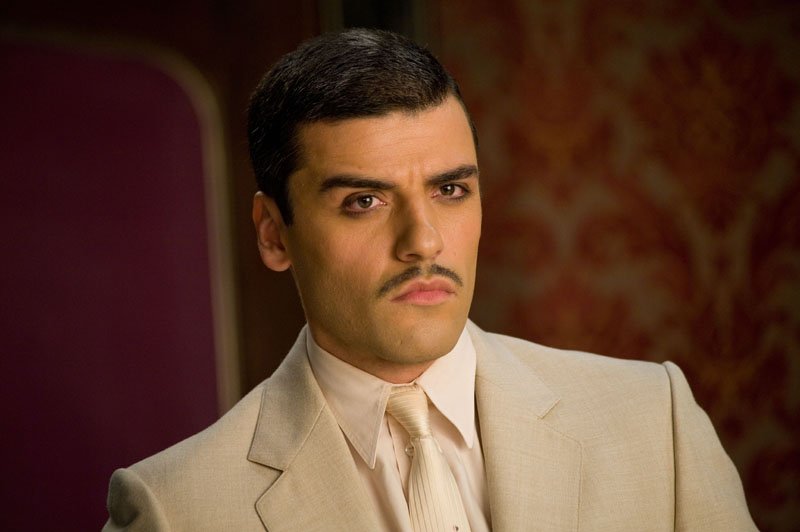 planes of reality require careful and highly detailed craftsmanship that ensures the audience is aware of where they are at any given time. Snyder's approach is too loose, allowing the different worlds to blur together and failing to provide clear-cut transitions between each. The film's last-minute reediting probably contributed to this narrative chaos.On a deeper level, the storyline of Sucker Punch fails to achieve the emotional/psychological depth it yearns for because it ignores character development. Baby Doll and her fellow patients are ciphers that are supposed to function as fantasy girl-power figures, yet they are only given the faintest wisps of personality or character traits. In fact, two of the supporting patient characters - Amber (Jamie Chung) and Blondie (Vanessa Hudgens) are only distinguishable because they have different ethnic b
planes of reality require careful and highly detailed craftsmanship that ensures the audience is aware of where they are at any given time. Snyder's approach is too loose, allowing the different worlds to blur together and failing to provide clear-cut transitions between each. The film's last-minute reediting probably contributed to this narrative chaos.On a deeper level, the storyline of Sucker Punch fails to achieve the emotional/psychological depth it yearns for because it ignores character development. Baby Doll and her fellow patients are ciphers that are supposed to function as fantasy girl-power figures, yet they are only given the faintest wisps of personality or character traits. In fact, two of the supporting patient characters - Amber (Jamie Chung) and Blondie (Vanessa Hudgens) are only distinguishable because they have different ethnic b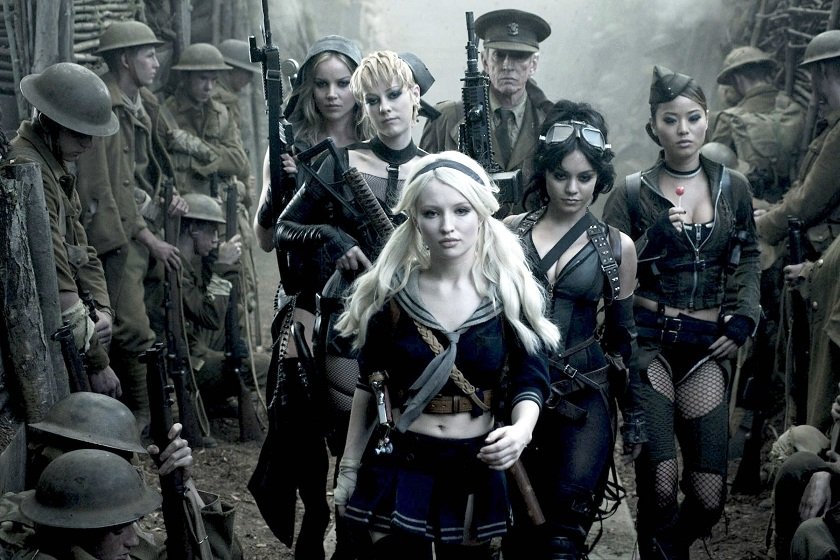 ackgrounds. As a result, these characters fail to register as strongly as the fantasy spectacle surrounding them - and they get lost in the film's tangled storyline.That said, Sucker Punch remains oddly watchable despite these conceptual missteps. The main reason is Snyder's vigorous direction, which has a focus and sense of detail that the storyline lacks. The opening sequence, which sets up Baby Doll's backstory without any dialogue, is an excellent example of purely visual storytelling.
ackgrounds. As a result, these characters fail to register as strongly as the fantasy spectacle surrounding them - and they get lost in the film's tangled storyline.That said, Sucker Punch remains oddly watchable despite these conceptual missteps. The main reason is Snyder's vigorous direction, which has a focus and sense of detail that the storyline lacks. The opening sequence, which sets up Baby Doll's backstory without any dialogue, is an excellent example of purely visual storytelling.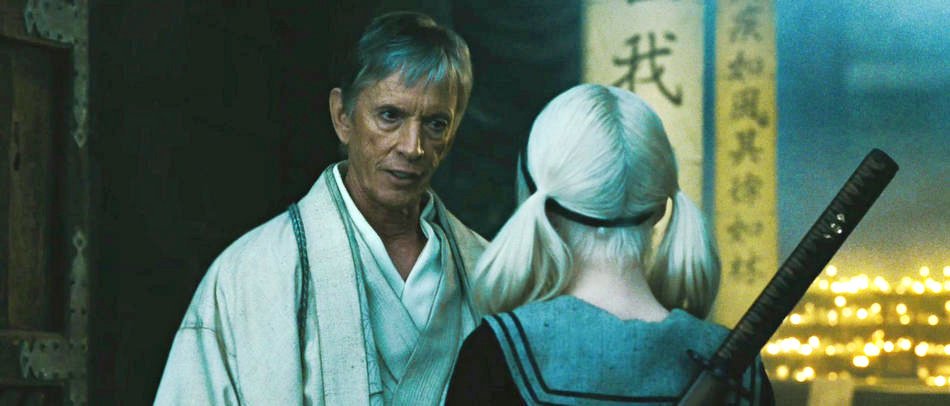 Snyder also excels at putting together elaborate fantasy battle sequences that effectively weave live-action and digital components together. Highlights in this area include a fight between Baby Doll and a few giant, demonic samurais and a scene where the patients are thrown into a battle with mechanical Nazis that let out bursts of steam when shot or cut. Snyder indulges an elaborate array of effects on a large scale but is careful to keep the action visually coherent and slickly-edited (he makes clever use of a trick where he slows down complex fight scenes to show a specific blow being landed, thus allowing the viewer to get their bearings in the midst of the action). These scenes are handled in a confident manner that eludes the likes of Michael Bay and are the major reasons to see Sucker Punch.On a mor
Snyder also excels at putting together elaborate fantasy battle sequences that effectively weave live-action and digital components together. Highlights in this area include a fight between Baby Doll and a few giant, demonic samurais and a scene where the patients are thrown into a battle with mechanical Nazis that let out bursts of steam when shot or cut. Snyder indulges an elaborate array of effects on a large scale but is careful to keep the action visually coherent and slickly-edited (he makes clever use of a trick where he slows down complex fight scenes to show a specific blow being landed, thus allowing the viewer to get their bearings in the midst of the action). These scenes are handled in a confident manner that eludes the likes of Michael Bay and are the major reasons to see Sucker Punch.On a mor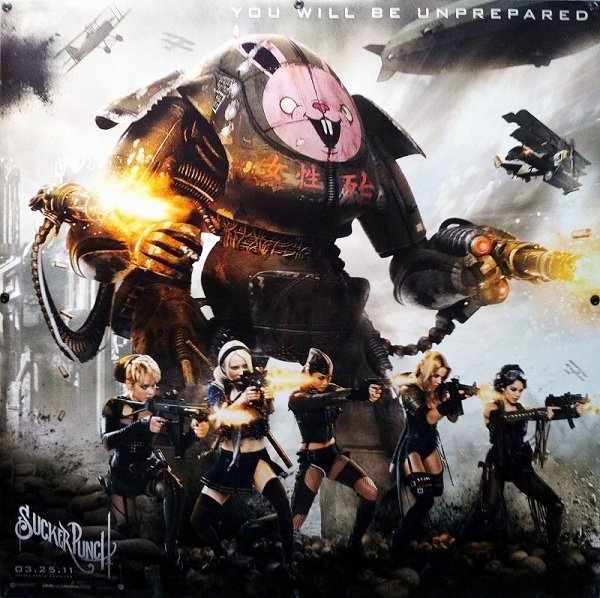 e general level, Sucker Punch is fascinating despite its flaws because it so incredibly gutsy for what is supposed to be a major studio event movie. The story is uncompromisingly dark and shoots for a complexity guaranteed to alienate the popcorn-movie crowd. You could say it is the equivalent of Inception in Snyder's filmography, at least in terms of ambition: an attempt to reinvent genre material in an eccentric, brainy way. Sucker Punch is nowhere near as accomplished as Inception, but you can't fault Snyder for lacking ambition - and the film is too packed with action and odd visual touches to be dismissed as boring.In short, Sucker Punch is an interesting misfire. It doesn't work the way it was intended to but it displays admirable amounts of creativity and energy along the way - and if you can appreciate its visual pyrotechnics, you might find something to enjoy amidst the narrative rubble.
e general level, Sucker Punch is fascinating despite its flaws because it so incredibly gutsy for what is supposed to be a major studio event movie. The story is uncompromisingly dark and shoots for a complexity guaranteed to alienate the popcorn-movie crowd. You could say it is the equivalent of Inception in Snyder's filmography, at least in terms of ambition: an attempt to reinvent genre material in an eccentric, brainy way. Sucker Punch is nowhere near as accomplished as Inception, but you can't fault Snyder for lacking ambition - and the film is too packed with action and odd visual touches to be dismissed as boring.In short, Sucker Punch is an interesting misfire. It doesn't work the way it was intended to but it displays admirable amounts of creativity and energy along the way - and if you can appreciate its visual pyrotechnics, you might find something to enjoy amidst the narrative rubble.


